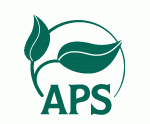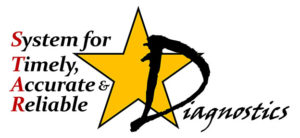One of the functions that the Texas Plant Disease Diagnostic Lab is to be a training ground for our students at Texas A&M University. We have had a somewhat open-door policy for student from the Department of Plant Pathology and Microbiology and the associated undergraduate BioEnvironmental Science (BESC) program. In addition to that, we have hosted an international Borlaug Fellow who came for short term training in plant pathology & diagnostics. This summer, a undergraduate student worker is parlaying her work at the Plant Clinic into an internship to fulfill a BESC degree requirement. Marisa will be spending 10 weeks under this writing intensive course (BESC 484) doing various things that I will throw at her. One of the task that I gave her is to write a blog article, on a biweekly basis, on a pathogen of interest that she had observed/diagnosed during her daily duties. Below is the first installment… Encouraging comment to a young student is always greatly appreciated (especially when the mentor may be extremely demanding.) Enjoy.
Blog article #1 by Marissa McCarthy (for partial fulfillment of BESC 484 requirement)

Perithecium of Nectria. (Photo taken by M.McCarthy 2012)
Nectria is most often found as a saprophyte on decaying wood; however some species are found to infect and parasitize on the bark of trees, especially woody ornamentals and fruit trees. This specific sample of Nectria was found on an Oleander from a private residence. Nectria has been found to affect over one hundred species trees and can cause significant economic damage to crops, forests and orchards. Cool and moist climates are the most conducive to the growth and spread of the fungus, mainly found in North America and in Europe. There have been eighty-two species identified to be in the Nectria genus. Some rare species have been found in drier and warmer climates in New Zealand, Australia and Hawaii. Growth of Nectria is normally slowed when the temperature reaches 25oC and all growth is completely halted when the temperature reaches 35oC. Nectria has many anamorphs or asexual forms with the most common on being Cylindrocladium. The formation of the perithecia of Nectria is typically found to be bright red or orange in color with a spherical shape and is generally taller than they are wide. Asci are commonly found to contain eight ascospores in a uniseriate arrangement and contain one, barely discernible, incomplete septa. Spores are dispersed very easily by slight wind, rain splash and runoff, dissemination of spores can also be ejected and viscous droplets.

Asci of the Nectria (Photo taken by M.McCarthy 2012)
Night time provides the ideal temperature and humidity that allows the ascospores to mature, dawn triggers a drop in humidity that causes a widespread ascospore discharge that coincides with the formation of dew, thereby providing the spores with a water source, as they are extremely sensitive to desiccation. Prevention of the spread of Nectria can be done by implementation of delaying of planting until the weather warms up, checking seeds, cuttings and seedlings to ensure the planting of disease free plants.
Mentor comment: It would be good to include photographs of the affected plant so that symptoms on the plant host can be shown to demonstrate what this pathogen can do and where you found the culprit.



